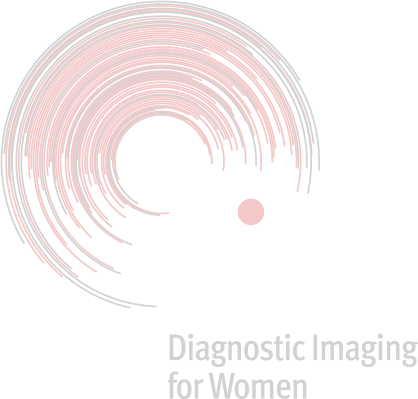There are two types of mammogram; Screening mammograms are performed for women who have no symptoms or signs of breast cancer and are considered at average risk for breast cancer. Your first mammogram is considered a baseline mammogram against which all future tests will be compared to look for changes in your breast tissue.
Diagnostic mammograms are performed for women who have symptoms such as a lump, pain, nipple thickening or discharge, or whose breasts have changed shape or size.
2D mammograms capture images of the breast from the top and from the side, whilst 3D mammograms (or tomosynthesis) create a 3D image of the breast by capturing a series of images at various angles.
The standard imaging at Diagnostic Imaging for Women consists of 2D mammography in conjunction with 3D mammography, where a 2D image and 3D image of the breast are captured simultaneously, generating high detailed images of the breast tissue. This process involves 4 standard images of the breast captured from various angles. The mammographer will compress the breast gently using a paddle to hold the breast in place. Compression of the breast is necessary to ensure the breast tissue is uniform and will produce the most accurate imaging.
The benefits of combined 2D and 3D mammography are:
- Reduced need for follow up imaging
- Detection of more cancers than a standard 2D mammogram alone
- Improved breast cancer detection in dense, complex, and glandular breast tissue
